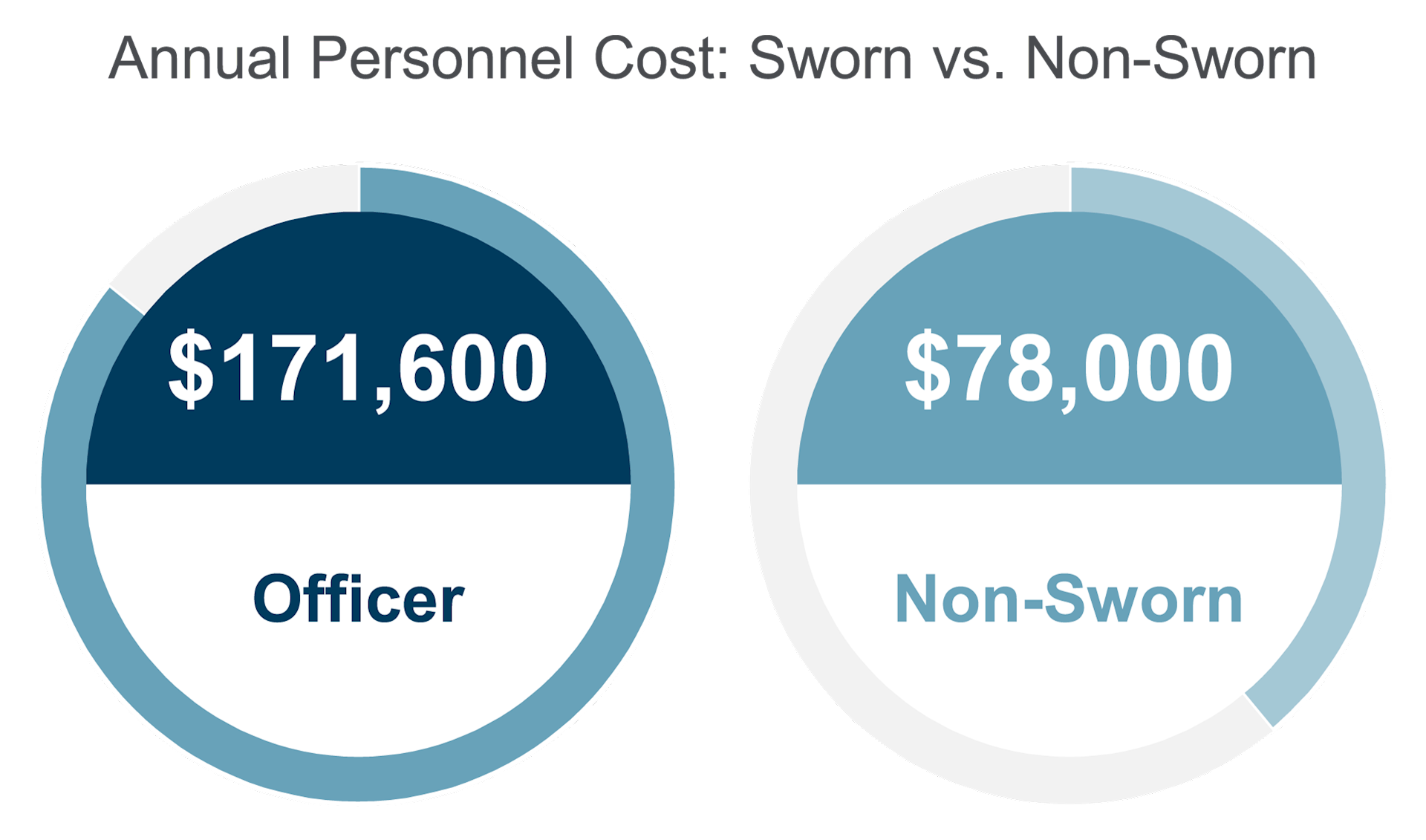Read this if you are a Police Executive, City/County Administrator, or elected government official responsible for a law enforcement agency.
Are your officers overwhelmed with workload? Have you been asked to do more with less? Is your agency struggling with maintaining sworn staffing levels? Has your community been questioning why the police respond to things that might be more appropriately handled by others?
If you answered yes to one or more of these questions, your agency might benefit from a comprehensive analysis of your police call-for-service (CFS) response model.
Increasing CFS workloads
Many police agencies in the US have been struggling with increasing CFS workloads, while simultaneously facing ever-tightening budgets and unprecedented attrition and vacancy rates. As a result of these challenges and national trends calling for police response reform, many police departments have started to ask a very simple question: “Is there a better way?”
Considering alternatives to police CFS response is not new. In fact, many agencies already use some form of CFS diversion, whether through a telephone response unit (TRU), online reporting, mobile apps, or the use of non-sworn personnel. What is different and new in the most recent discussion is the understanding that this conversation is not simply about providing these alternatives as possible options.
It is about considering fundamental changes to how police departments do business, including identifying collaboration opportunities with other organizations and in some cases outsourcing certain CFS types entirely.
Despite growing interest among police agencies in identifying alternatives to the traditional police CFS model, many have struggled to deliver an objective process that can produce meaningful results, and in some cases, suggested revisions have met with resistance from staff, elected officials, and community members.
Best-practices approach to call for service response model
The best-practices approach to conducting an Essential CFS Evaluation should be one that is highly collaborative, but also expand beyond the walls of the police department. The 21st Century Policing Task Force final report explains:
Law enforcement agencies should work with community residents to identify problems and collaborate on implementing solutions that produce meaningful results for the community… and do things with residents in the co-production of public safety rather than doing things to or for them.
Determining possible alternatives to traditional CFS police response requires substantial data collection and analysis to inform and guide outcomes and recommendations. It also requires a thorough and comprehensive process that considers:
- Legal mandates
- Immediate response needs
- Potential risk
- Workload volumes by CFS type
- Operational policies and training
- Alternative resources, whether or not they currently exist
- Community priorities and expectations
- Fiscal impacts
The cost of providing consistent and effective public safety services is one of the more critical reasons for considering CFS response alternatives. Although officer salaries vary by state, region, or department, the cost of staffing a non-sworn position is typically 40%-45% of the cost of a sworn officer.

There is a common reason why the legal profession has attorneys and paralegals, the medical profession has doctors and physician’s assistants, and why many ambulance companies have moved to a paramedic and emergency medical technician (EMT) team, as opposed to staffing two paramedics in one ambulance. Cost is a driving force in these examples and the same circumstances are present in the law enforcement industry (among others). A well-trained non-sworn police staff member can handle a variety of CFS that do not require the presence of a sworn officer—likely at half the cost. Shifting the work burden from sworn to non-sworn personnel benefits officers by freeing them up to perform tasks that require an officer to respond, and it benefits the department and community by reducing costs.
Beyond the issue of cost, there is also increasing conversation about the effectiveness and appropriateness of using police personnel to manage a variety of CFS types, including mental health incidents and those involving the unhoused, for example. Regardless of the CFS type, it is critical to use a process that involves influential participation by both providers and consumers.
Making changes to the traditional police CFS response model is involved and it requires a thoughtful approach. BerryDunn has developed an Essential CFS Evaluation process that considers numerous critical factors to produce data that police staff, community and elected leaders can rely upon in making critical decisions about future public safety needs.
If you are curious or have questions about our Essential CFS Evaluation process, our dedicated Justice & Public Safety team is available to discuss your organization’s needs.